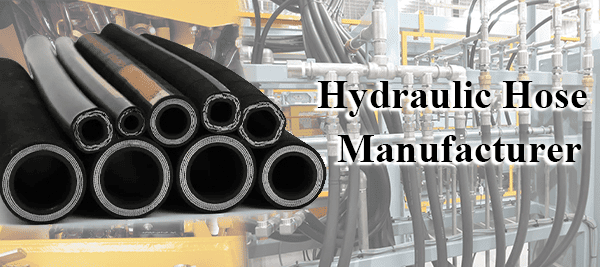Hose clamps are accessories used to secure hoses, pijpen, or connectors. They work by tightening or compressing to ensure the hose doesn’t loosen or fall off during installation. They are commonly used in piping systems, cars, and machinery.
Hose clamps are usually made of a metal band, screws, and nuts, which allow the clamp’s tightness to be adjusted by turning the screws. Depending on the material, ontwerp, and environment, hose clamps can come in different types, such as stainless steel, plastic, or spring clamps.
To tighten or remove a hose clamp, find the adjustment mechanism. For screw-type clamps, turn the screw counterclockwise with a screwdriver to loosen it. For spring clamps, use pliers to compress the clamp and slide it off. Be careful not to damage the hose.
This article explains how to correctly remove and tighten different types of hose clamps and the tools needed for the task.
Types of Hose Clamps and How to Remove Them
Hose clamps come in various designs, with each design having unique functions, specifically made for different applications.
1. Screw-type Clamps
Description: These are the most common and widely used hose clamps. They feature a screw mechanism that tightens the clamp around the hose.
Voordelen:
- Easy to tighten and loosen
- Suitable for most common applications
- Affordable
Nadelen:
- It’s easy to overtighten, which could damage the hose
- Can rust over time, making them hard to adjust or remove
- Best for standard applications, not suitable for high-pressure needs
How to Remove: Use a flathead screwdriver to turn the screw counterclockwise. Once the screw is loosened, the clamp will slide off.
Tip: Be careful not to strip the screw, especially if the clamp has been in place for a long time.
2. Spring-type Clamps

Description: Spring-type hose clamps use a spring mechanism to apply pressure to the hose. They are commonly used in automotive and industrial applications.
Voordelen:
- Automatically adjusts to fit hoses of different thicknesses
- Strong seal
- Longer lifespan and less likely to rust
- Easier to install and remove
Nadelen:
- Spring clamps provide strong holding power, making them difficult to adjust once installed
- Special pliers are needed to remove the clamp
How to Remove: Use pliers to squeeze the spring together, which will compress the clamp and allow it to slide off the hose. After removal, be careful not to release the spring too quickly to avoid injury.
Tip: Use pliers with a strong grip to prevent the spring from slipping.
3. Ear Clamps
Description: Ear clamps are used for situations requiring a permanent and secure connection. They have two inward-bent “ears” that tighten the clamp.
Voordelen:
- Provides a very tight and permanent seal
- Strong vibration resistance
- No risk of overtightening
Nadelen:
- Requires special tools for installation and removal
- Typically single-use; the clamp is usually damaged when removed and needs to be replaced
How to Remove: To remove an ear clamp, you’ll need a special ear clamp tool. The tool works by pulling the “ears” apart to compress and remove the clamp.
Tip: Apply gentle pressure to avoid damaging the hose.
4. T-boutklemmen

Description: T-bolt clamps feature a T-shaped bolt that provides a very strong hold, typically used in high-pressure applications like automotive and heavy machinery.
Voordelen:
High torque strength
Durable
Easy to adjust
Nadelen:
- T-bolt clamps are usually more expensive than screw-type clamps
- Large and heavy, making them suitable for high-pressure applications
How to Remove: Use a wrench to turn the T-bolt counterclockwise. Once loosened, slide the clamp off the hose.
Tip: Be sure to use the correct wrench to avoid damaging the T-bolt.
How do I tighten the hose clamp?
What to Do if Your Hose Clamp Won’t Tighten
Tightening a hose clamp is a simple process if you use the right tools and techniques. Here’s a quick guide on how to tighten a hose clamp without causing damage:
Choose the Right Tool:
Different types of hose clamps (screw-type or spring clamps) require different tools. A flathead screwdriver or socket wrench works well for screw-type clamps, while pliers are best for spring clamps.
Tighten Gradually:
When tightening a screw-type hose clamp, slowly turn the screw or clockwise bolt until it’s secure. Vermijd overduidelijk, as this can damage the hose or clamp, leidend tot lekken.
Check for Leaks:
After tightening, check for any leaks to ensure the seal is correct. If you see water or fluid escaping, tighten the clamp slightly, but be careful not to overtighten.
Veelgestelde vragen (FAQs)
What is the most common type of hose clamp?
The most common type is the screw-type hose clamp, which uses a screw to tighten the clamp around the hose. It is easy to use, widely available, and suitable for most low-pressure applications.
Can I reuse a hose clamp?
Ja, you can reuse a hose clamp if it’s in good condition. Echter, if the clamp is rusted, deformed, or no longer working properly, it’s best to replace it to prevent leaks.
How tight should the hose clamp be?
Tighten the clamp until it’s snug against the hose, but avoid tightening it so much that it distorts the hose’s shape.
How to remove a rusted hose clamp?
You can apply some penetrating oil (like WD-40) to the screw or bolt and let it sit for a few minutes. This should make it easier to remove. If the wrench doesn’t grip the screw or bolt properly, you can also use pliers to turn the screw or bolt.



